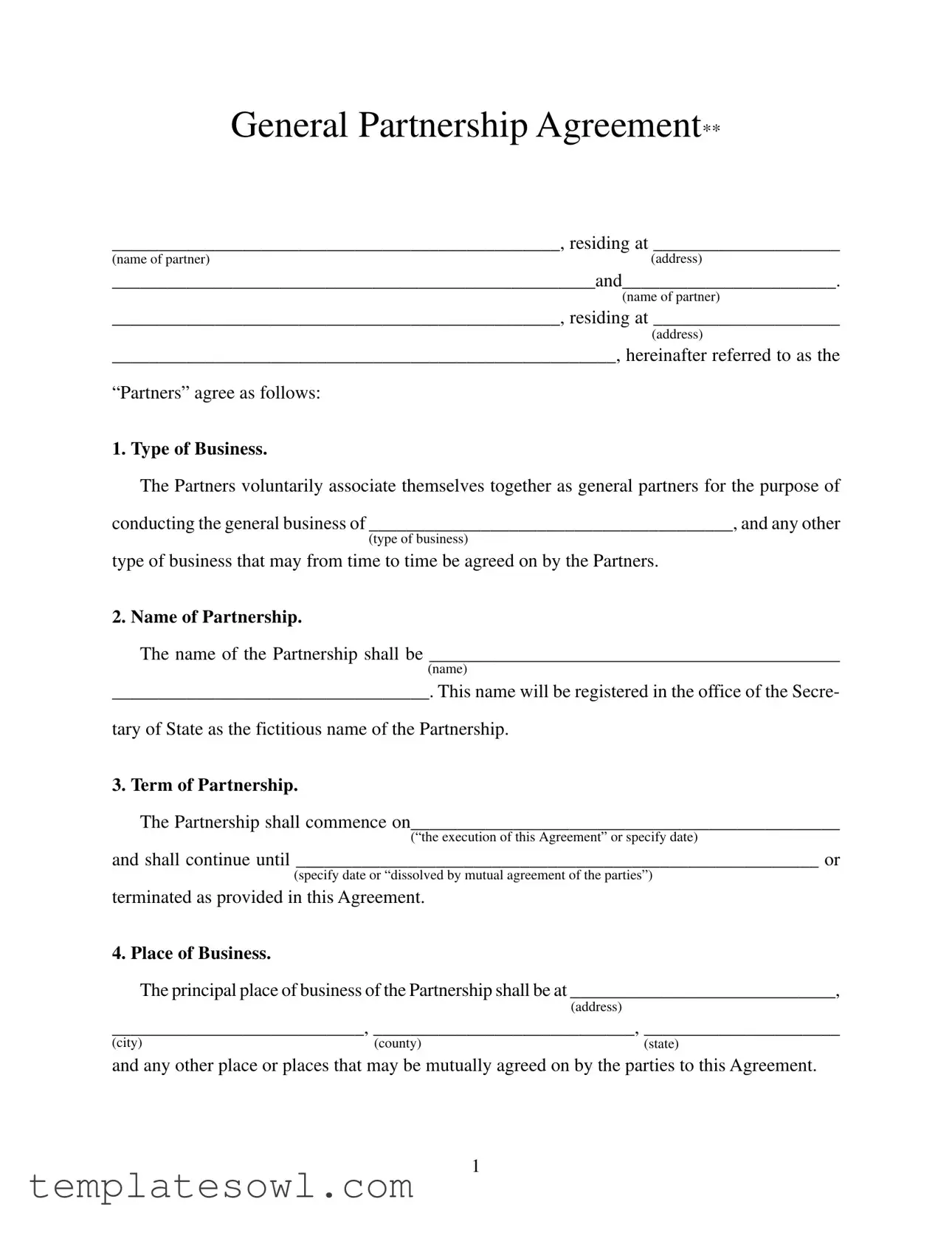What is a General Partnership Agreement?
A General Partnership Agreement is a legal document that outlines the shared responsibilities, management, and operational guidelines for partners in a business. It establishes the framework under which the partners will operate, detailing everything from capital contributions to profit sharing and responsibilities. This agreement is essential for clarifying expectations and protecting the rights of each partner.
Why do I need a General Partnership Agreement?
A General Partnership Agreement is crucial for several reasons. First, it helps prevent misunderstandings by clearly stating each partner’s roles and contributions. Additionally, it provides a structure for addressing disputes and outlines what happens if a partner withdraws or if the partnership dissolves. Having this agreement in place can save time, money, and relationships in the long run.
What should be included in a General Partnership Agreement?
The agreement should include key details such as the name of the partnership, the type of business, the contributions of each partner, profit and loss distribution, management roles, and procedures for withdrawal or dissolution. It is also advisable to specify how decisions are made and any limitations on partner obligations. By including these elements, the agreement covers important aspects of partnership operations.
How are profits and losses shared in a General Partnership?
Typically, profits and losses are shared according to the proportions agreed upon in the partnership agreement. This could be equal, or it may reflect the amount each partner contributed. Clear guidelines regarding financial accountability and distributions help ensure that all partners are on the same page and reduce potential conflicts.
Can a partner withdraw from the partnership?
Yes, a partner can withdraw. The General Partnership Agreement should specify the process for withdrawal, including any required notice periods. Generally, written notice must be provided prior to the end of an accounting period. This ensures that all partners are aware and can prepare for the transition.
What happens if a partner dies?
In the unfortunate event of a partner's death, the General Partnership Agreement typically outlines the procedure for handling the partnership interest of the deceased partner. The surviving partner may have the right to purchase the deceased’s share, ensuring that the deceased partner's estate is compensated for their interest according to the terms specified in the agreement.
How long does a General Partnership last?
The duration of a General Partnership is defined in the partnership agreement. It can be established for a specific period or continue indefinitely until certain conditions lead to dissolution. Common reasons for dissolution include the withdrawal of a partner, completion of a business goal, or mutual agreement among partners.
Do I need a lawyer to create a General Partnership Agreement?
While it is possible to draft a General Partnership Agreement without legal assistance, consulting a lawyer is highly recommended. A lawyer experienced in business law can provide guidance, ensure compliance with local regulations, and help tailor the agreement to effectively meet the unique needs of the partnership. This professional input can prevent future legal issues and misunderstandings.
